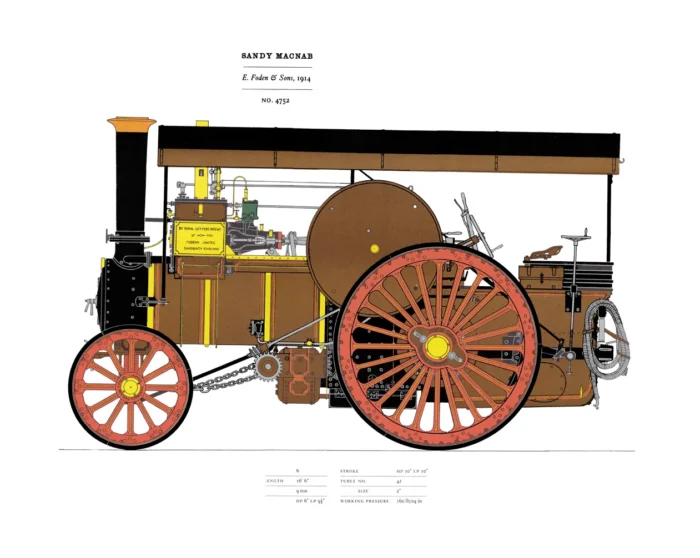Foden’s “Sandy Macnab”, 1914 (No 4752)
Original price was: £25.00.£17.50Current price is: £17.50.
Traction Engines 1900-1933
In stock
- Satisfaction Guaranteed
- No Hassle Refunds (see Shipping and returns)
- Secure Payments
Description
This road locomotive was built for heavy haulage of loads of 40 or 50 tons and was used by heavy hauliers. To do this a compound engine transmitted power by three speeds and a gear train whose teeth were machined with wider faces than in general purpose engines. Latterly, road locomotives were fitted with rubber tyres but many early models carried patent sprung wheels or wheels shod with wood or sprung strakes. They were always covered by a three-quarters length awning, frequently had high bunker sides and a belly tank for extra water. Other standard fittings included spring axles and a winch that was in constant demand handling loads on and off trailers. Engines like this were often used after the blitz in the Second World War to demolish unsafe buildings. Experimental steam lorries were first produced in the early 20th century. In 1878, legislation affecting agricultural use was eased and Foden produced a successful range of agricultural traction engines. The perfecting of the compound traction engine in 1887 gave a significant marketing advantage and later proved invaluable to the development of the steam lorry. In 1980 Foden went into receivership and was taken over by Paccar of the US who later took over British Leyland Trucks and now produces DAF trucks some of which are badged as Fodens.
Additional information
| Dimensions | 44.5 × 35.5 cm |
|---|




